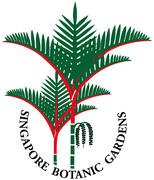Accepted name/Authority/Place of publication:
CALYCOBOLUS Willd. ex Roem. & Schult., Syst. Veg. 5: 4. (Dec. 1819).
Habit:
Lianas; stems woody, climbing, glabrous or pubescent. Indumentum of simple or T-shaped hairs.
Leaves:
Leaves petiolate, simple, entire, chartaceous to coriaceous, base attenuate, acute, or obtuse, apex attenuate to obtuse, pinnately veined, densely appressed pubescent to glabrous. Inflorescences axillary or terminal on lateral branches, umbelliform to paniculate-thyrsiform, composed of cymose units; peduncle hidden among flowers or quite long; bracts present, deciduous or persistent.
Inflorescences:
Inflorescences axillary or terminal on lateral branches, umbelliform to paniculate-thyrsiform, composed of cymose units; peduncle hidden among flowers or quite long; bracts present, deciduous or persistent.
Flowers:
Flowers small to medium-sized, slightly fragrant to odorless; sepals very unequal, outer 2 larger, cordiform, subtriangular, ovate or broadly reniform, tightly appressed to one another, base cordate, apex rounded to acute, inner 3 much smaller, decreasing in size toward innermost, ovate, elliptic, to rhombic, tightly enveloping corolla base; corollas tubular to narrowly funnelform, white, limb subentire to vaguely lobed, erect, interplicae pubescent outside or glabrous; stamens subequal, anthers oblong to linear-oblong, white, dehiscing lengthwise without twisting; pollen 3-colpate and 3-aggrecolpate (fide Lewis, 1971), non-spinulose; styles 2, free or partially fused below middle, stigmas 2, capitate or depressed globose.
Pollen:
Pollen 3-colpate and 3-aggrecolpate (fide Lewis, 1971), non-spinulose.
Fruits:
Fruits enclosed in accrescent, chartaceous calyx; indehiscent, an utricle or utricle-like , 1- or 2-locular, ovoid to ellipsoid, mostly chartaceous.
Seeds:
Seeds 1–4, ovoid to ellipsoid, black to brown, glabrous; hilum basal, often D-shaped.


Add new comment